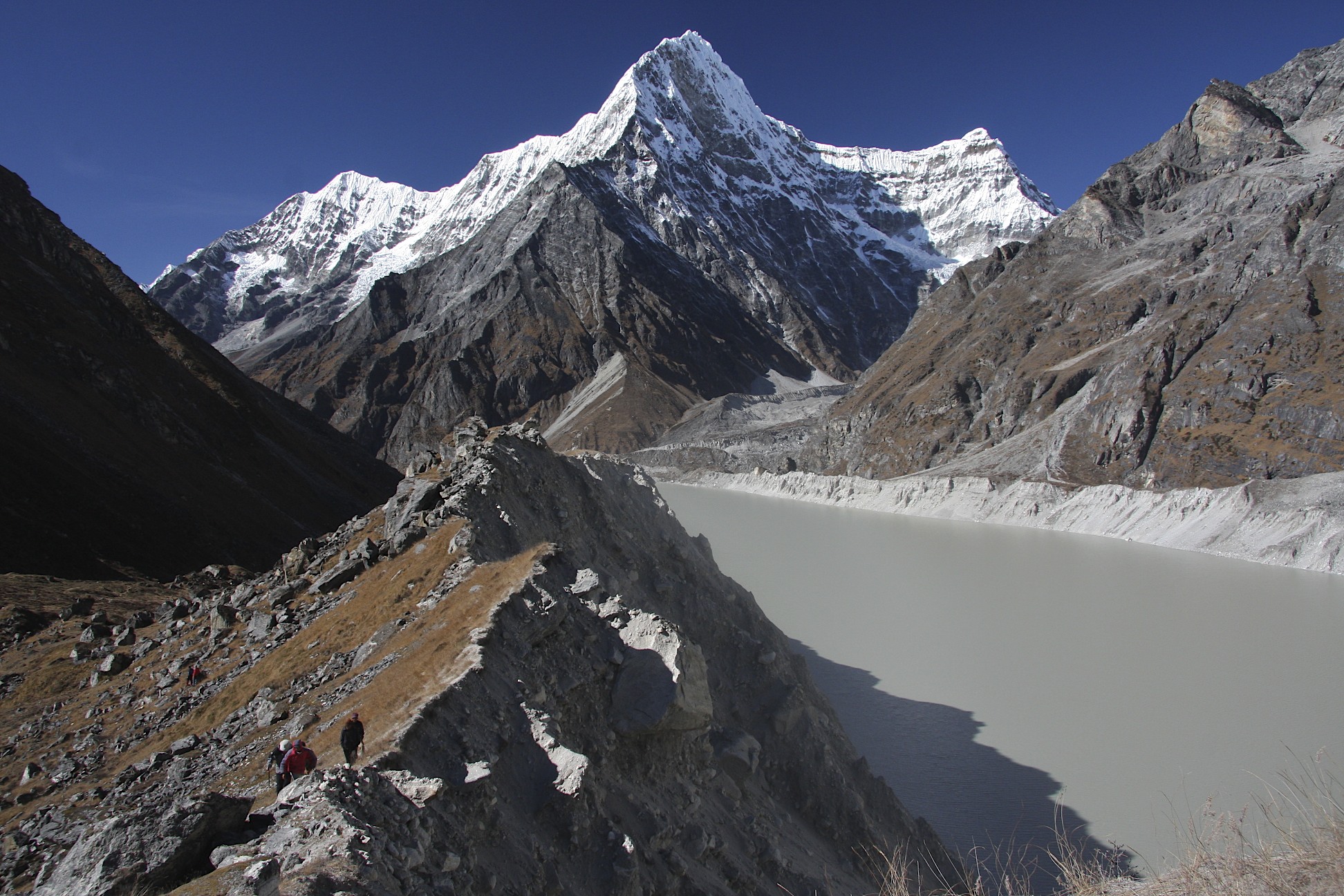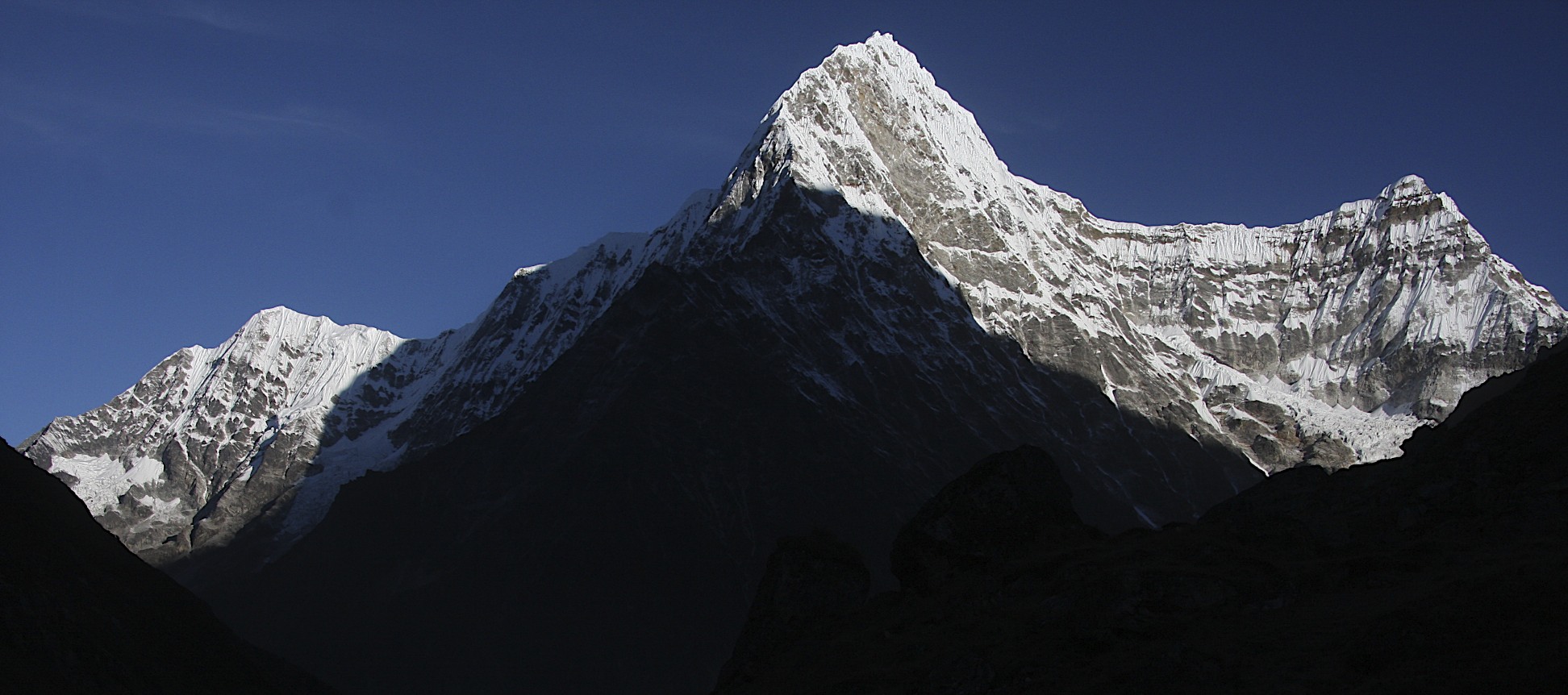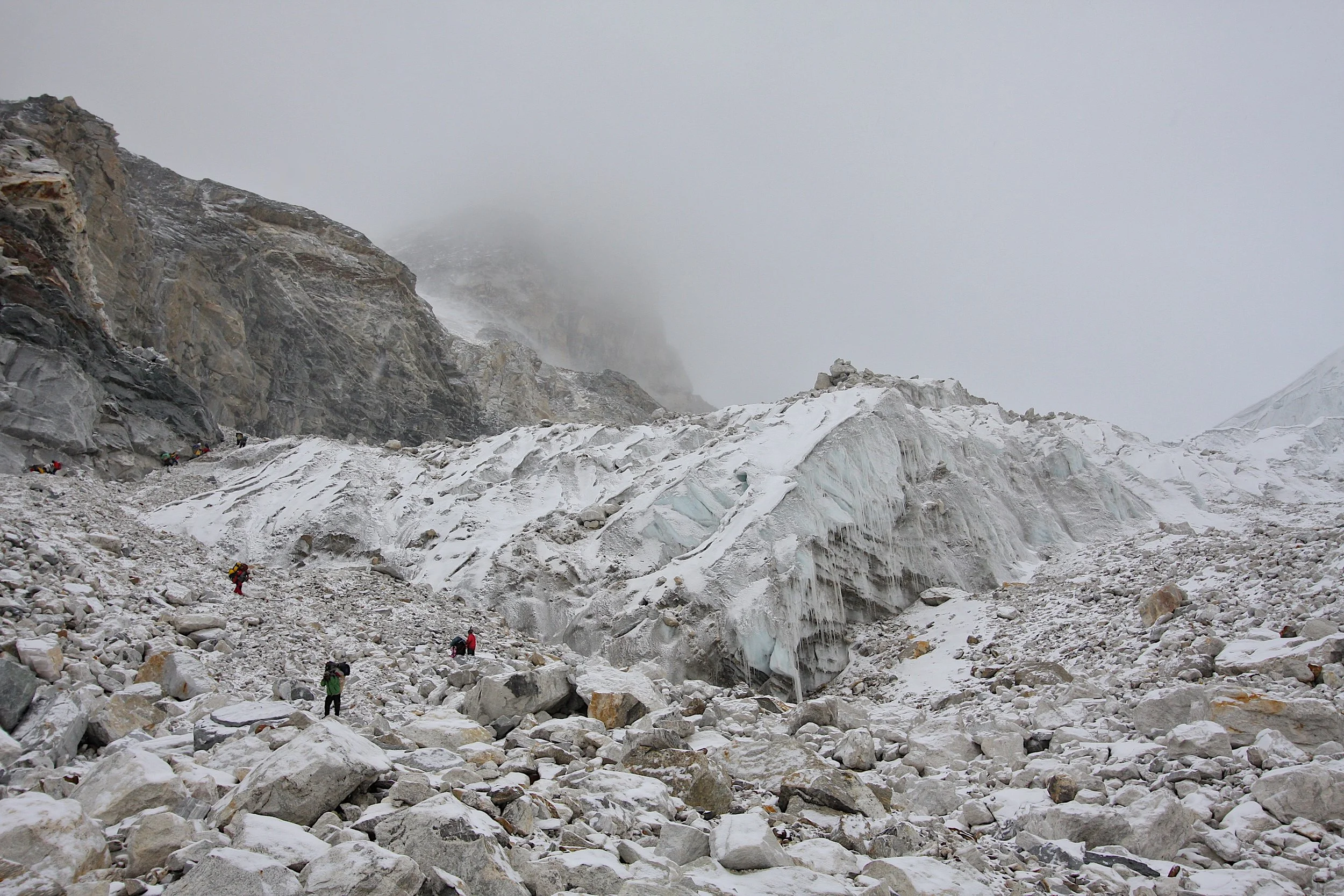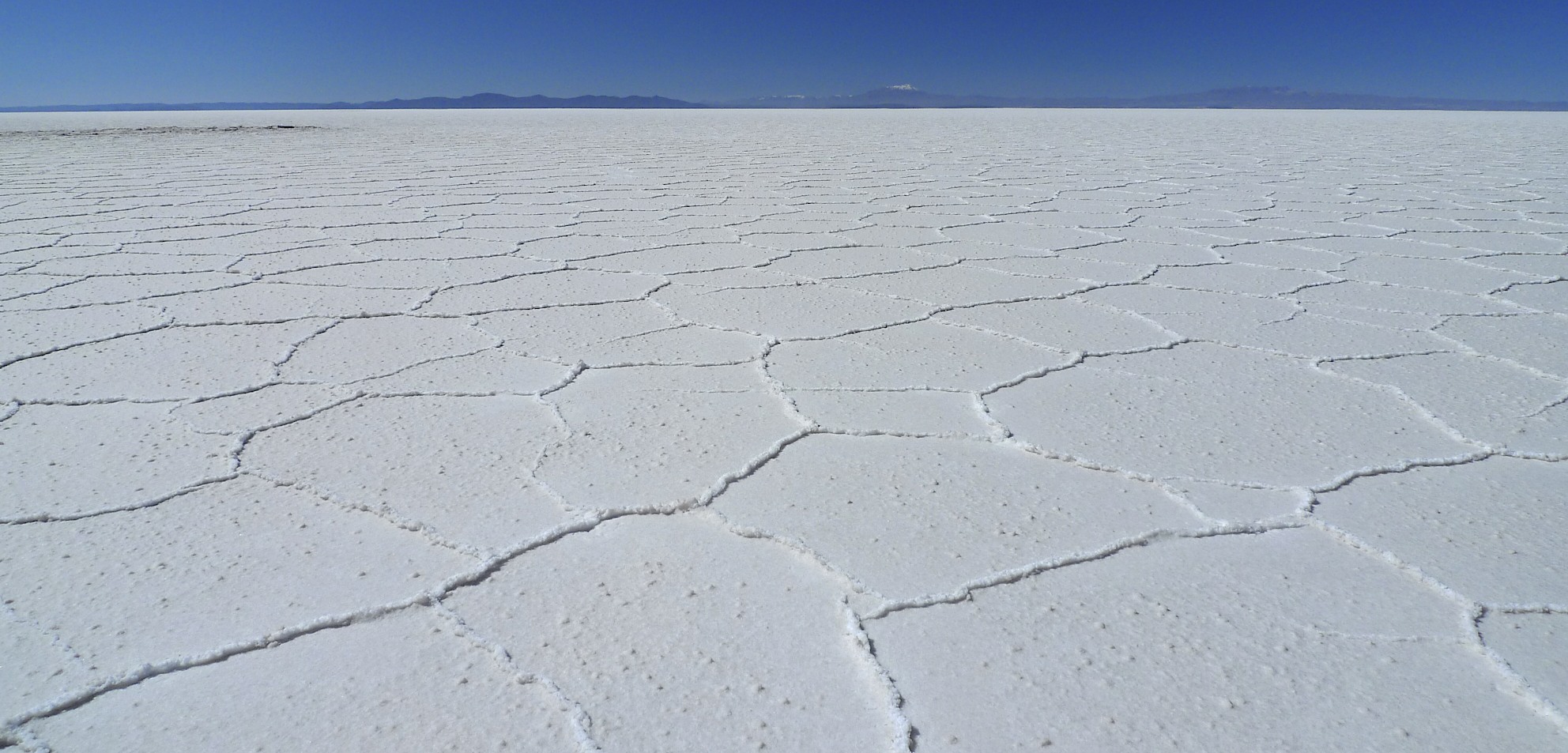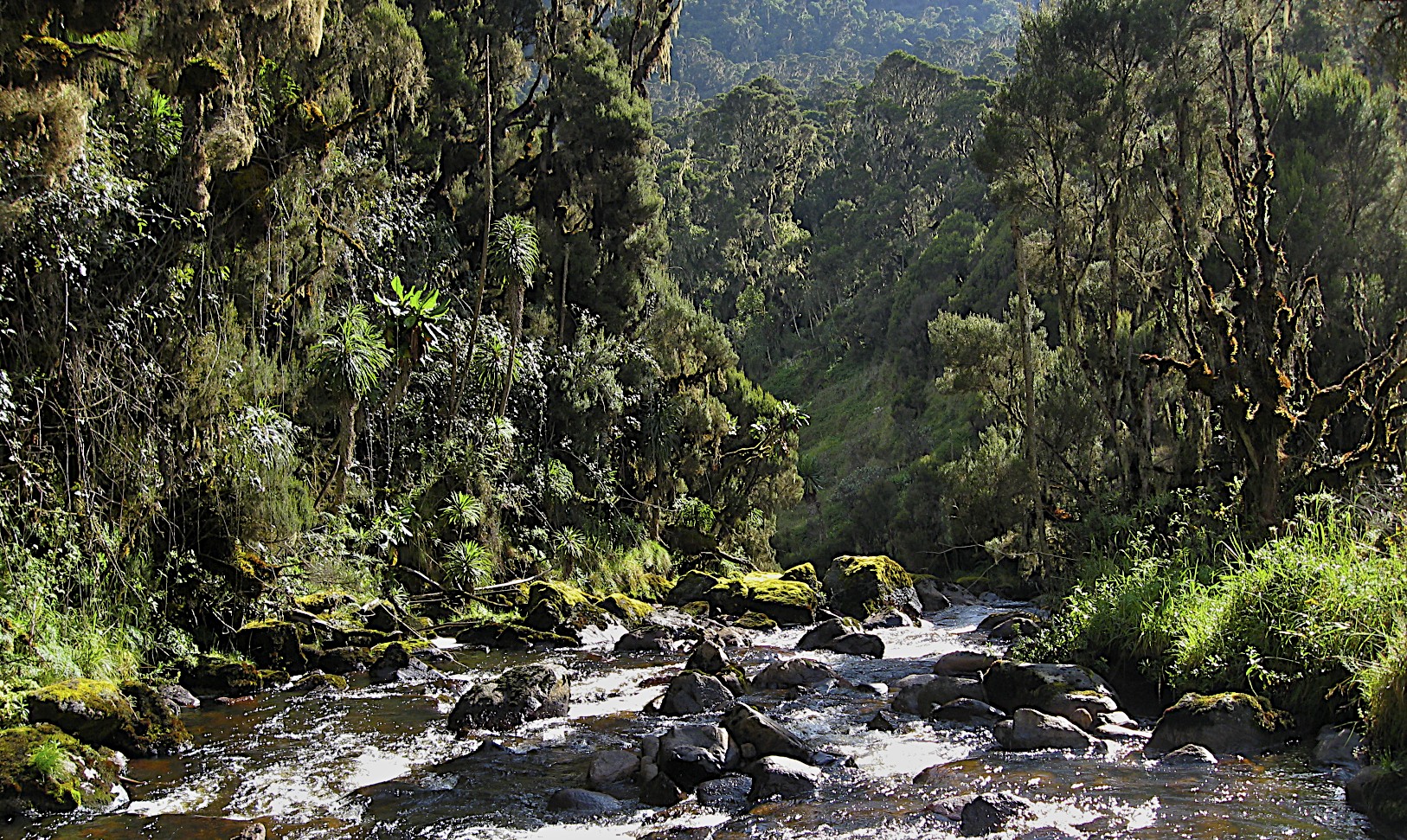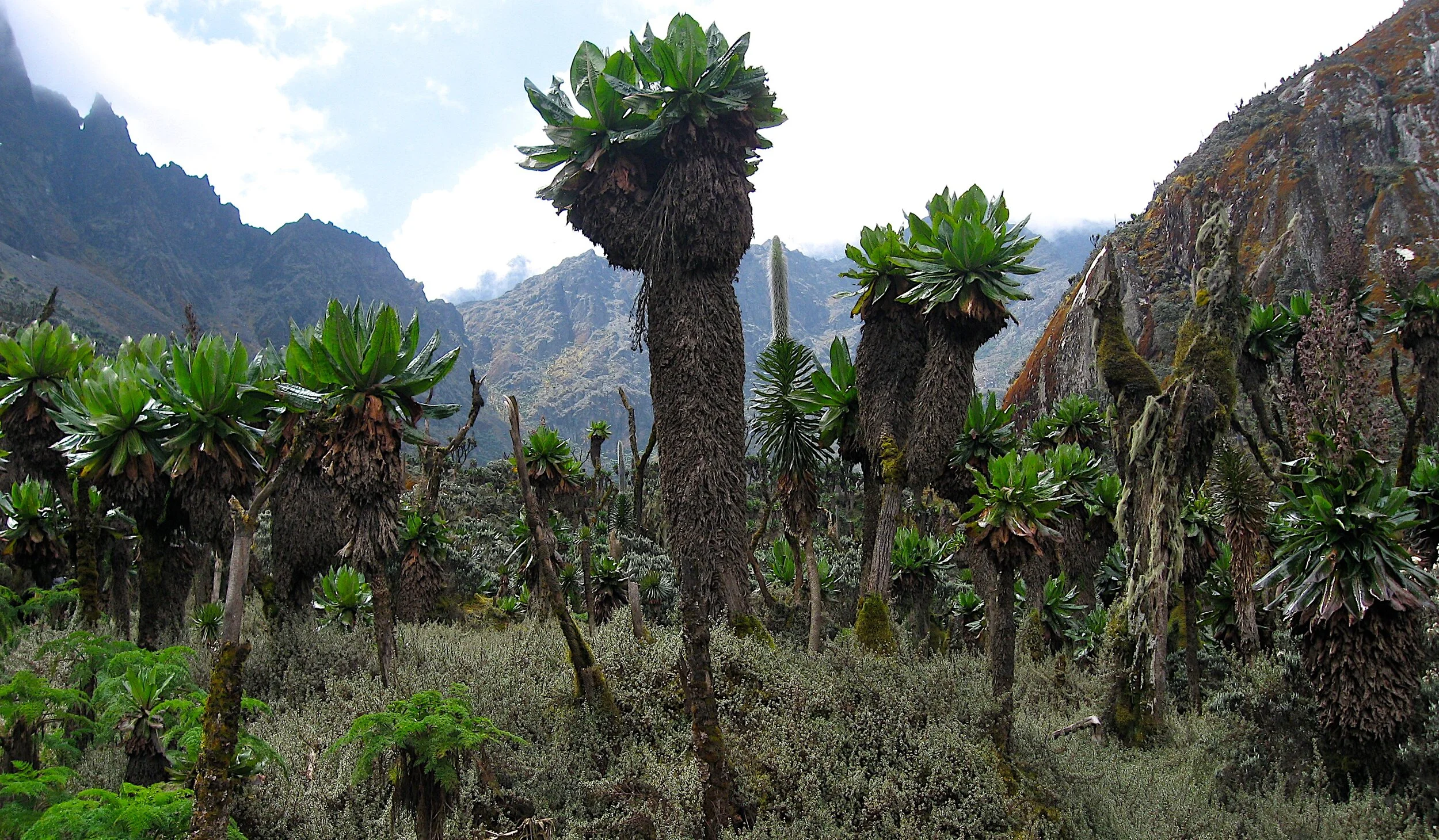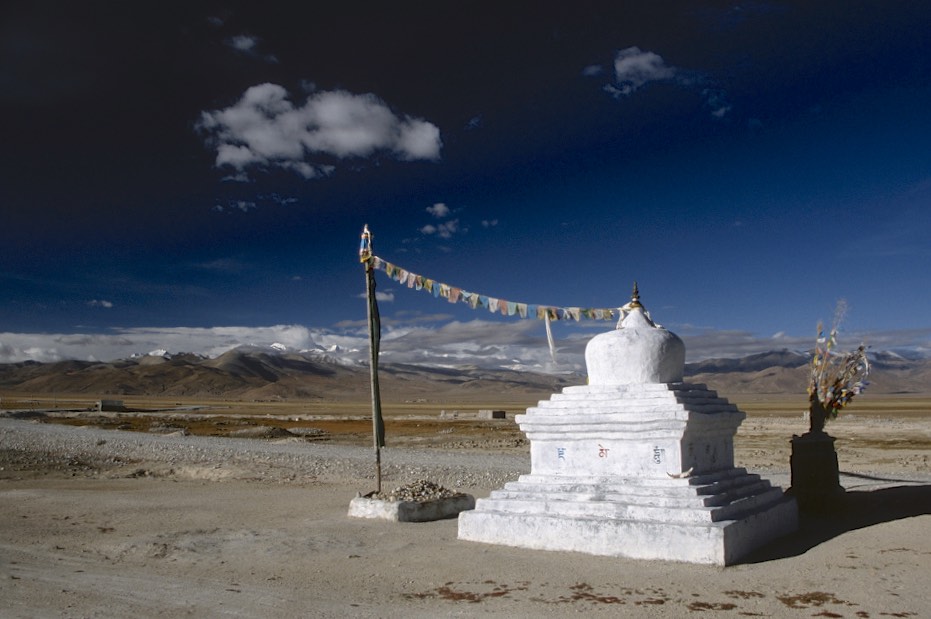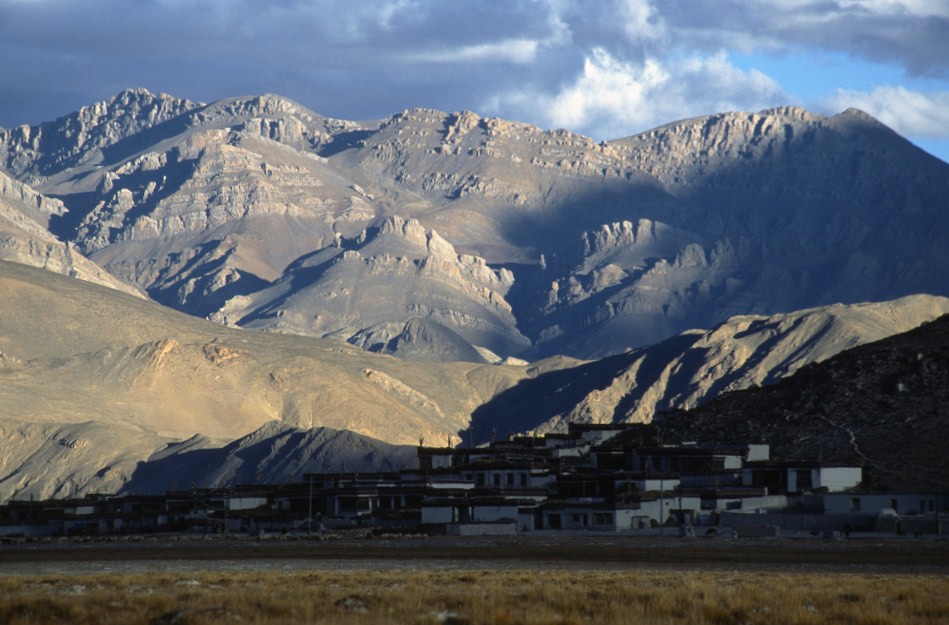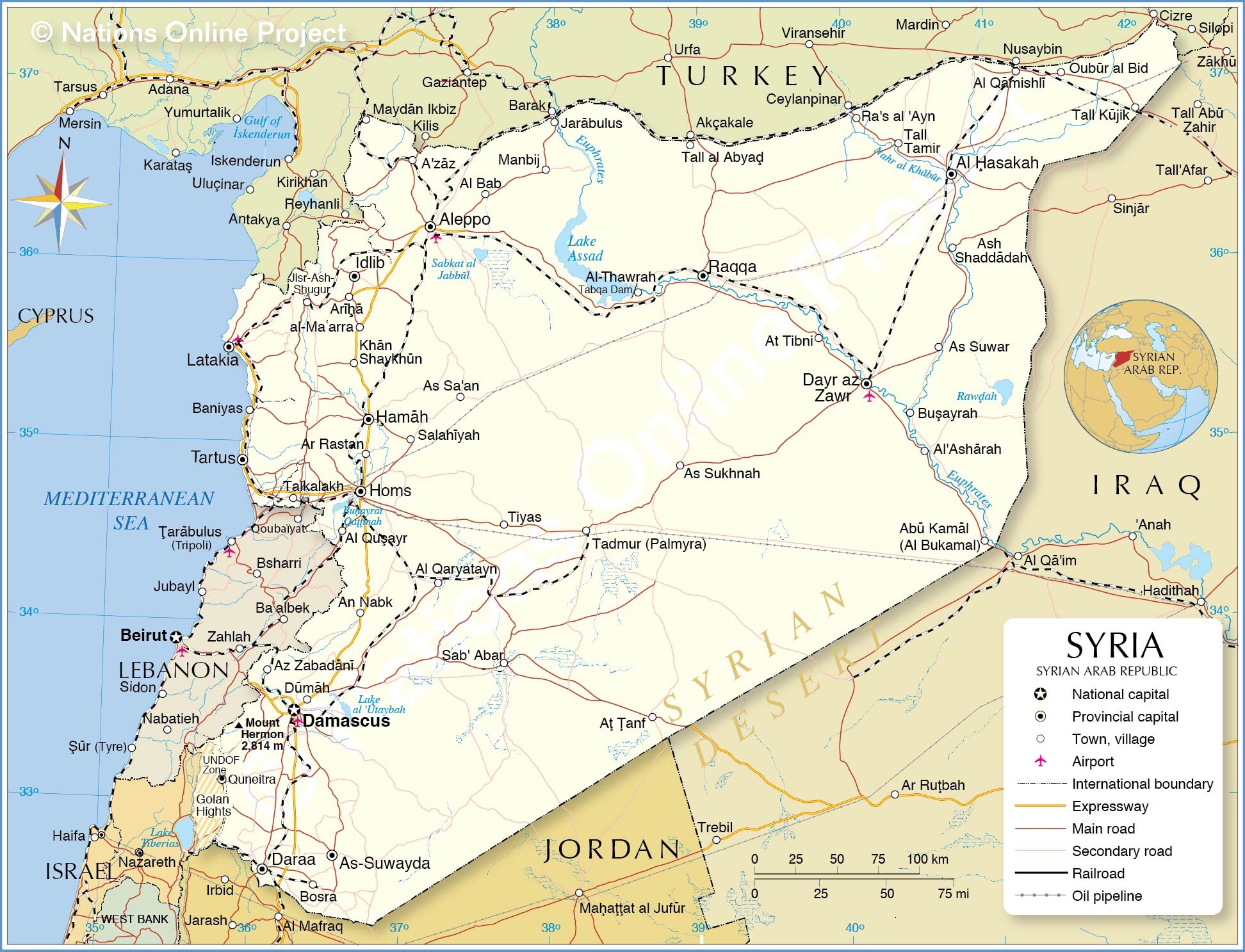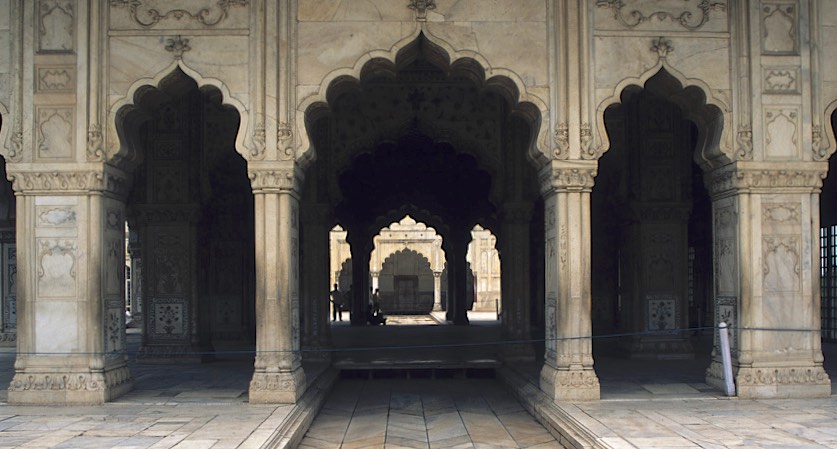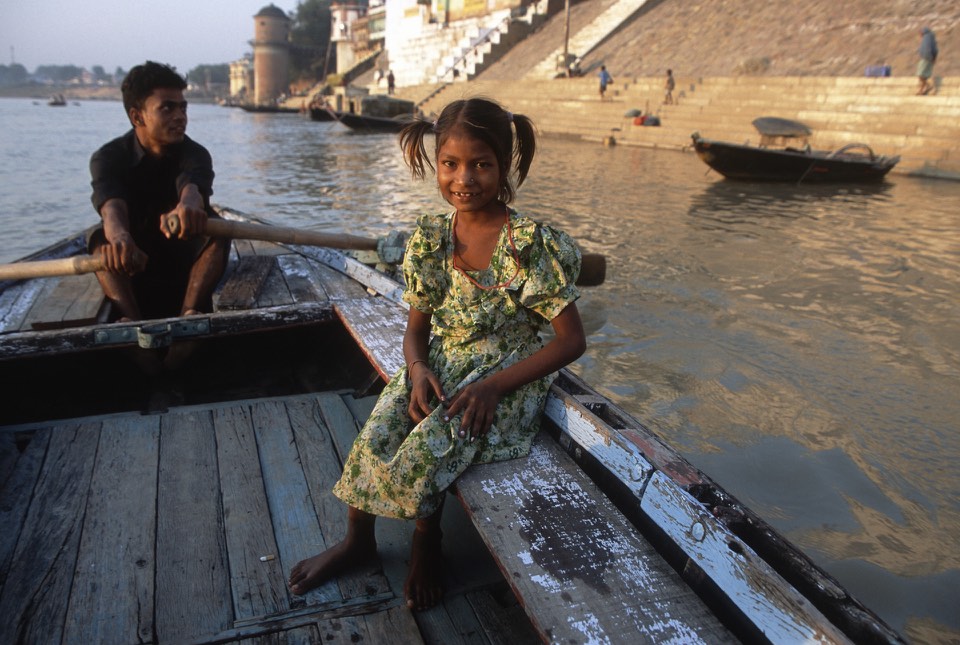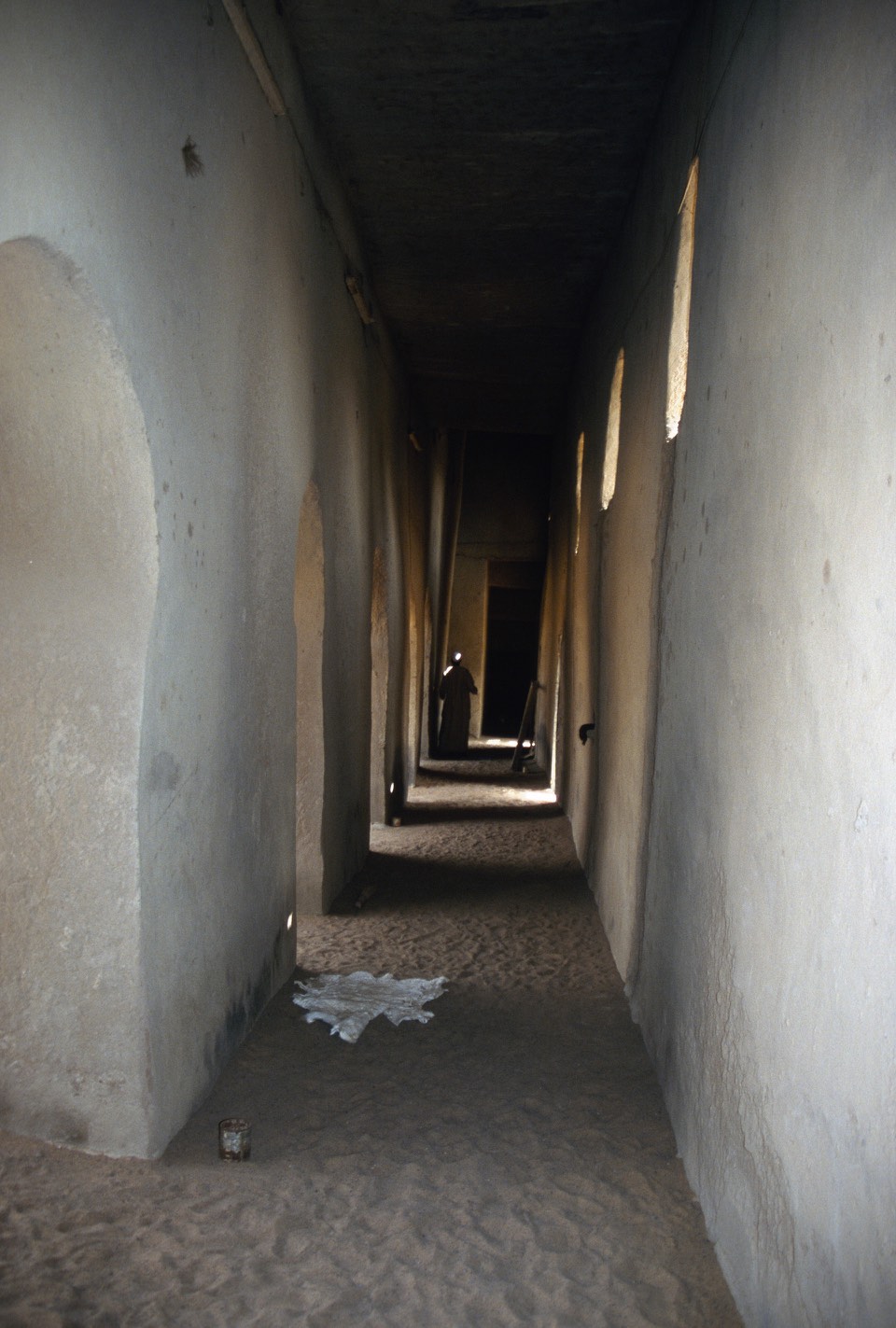Some random thoughts about the realities of trekking in Nepal: Nepal trekking consists of waking down and out of deep gorges from 900-1,000m to above 4,000m before being able to see any alpine scenery. For the true alpine scenery (ice, glaciers, peaks) one usually has to go above 5,000m. There is a lot of up and down referred to as "Nepali flat". The main trekking routes are crowded. On the popular trekking routes, the tourists are mainly older people. Food and drinks in teahouses, especially in the Khumbu are more expensive than in Canada. Phone calls are 300R ($4.5) per minute. Rooms are very basic, concrete floor, plywood walls (can hear everything form adjacent room). Inside, the room is as cold as a tent as the walls are not insulated. The toilet is usually outside, cold, and often just a hole in the ground. Sometimes it overflows. The toilet is flushed with a water bucket but the water in the bucket is sometimes frozen. It is difficult to sleep at the altitude above 5,000. I usually can’t fall asleep until midnight, wake up at 4am can’t sleep until dawn. The nights are long as the sun sets at 6.30 and rises at 6 am. In the teahouses one can sit in the dining room until 9 pm or so to pass time. While camping though, short days make for long nights in the sleeping bag.
November 3, 2010 Thame 3600m
We got up to a brilliant sunshine and beautiful winter aura all around us. We were right in the front of Mt. Thyangboche 6,482m and Mt. Kwngde 6,086m. Those two peaks rise vertically right behind the teahouse. Their walls were plastered with fresh snow from the storm we just experienced. It was still and quiet. We have not hit the main Everest trekking region yet so in the teahouse there were just us and the Polish climbers.
From the teahouse in Thyangbo, we walked to Thame on a good trail with wonderful view of Khumbu peaks in front of us. On the way, we stopped at a local gompa that was well taken care of with numerous prayer flags fluttering in the wind. From the terrace of the gompa, the backdrop of Mt. Thamserku 6,618m and Mt. Kangtega 6,783m dominated the view. Two huge peaks, very steep and standing tall above the Dudh Khola valley in bright sunshine and clear sky. In Thame, we stayed in a teahouse owned by a Guinness record holder who climbed Everest 21 times. He now lives in the US. His certificates were displayed on the wall of the dining hall. The teahouse was very clean, well built and organized. Thame was very built up and developed compared to the villages of the Rowaling Valley. The tourist dollars were all around us and many of the teahouse owners live permanently in Europe, US or Kathmandu.
In Thame, we parted ways with David who had to go to Lukla to catch his return flight home. Tony and I continued on to Renjo La and Gokyo Valley.
November 4, 2010 Thame 3610m - Lungdhen 4380m
We walked up the valley that leads to the Nangpa Pass and Tibet. On the way, we had lunch in a great teahouse run by a friendly Sherpani girl who Kumar attempted to connect with David. Kumar claimed that we can just make the offer of marriage to her and that and she would abandon her job and go with us without hesitation. How hard the life must be here if this is indeed the case which I found difficult to fathom? The life in the valley is hard. The lady we met, is up at 5 am attending to animals and fetching wood and water. She basically runs the teahouse all on her own. Her dad, who owns the teahouse, climbed Everest 3 times and had a little wall of fame in the dining hall. He was a very small older man with very pleasant disposition like most people of Nepal.
Along the way to Renjo La pass at 5,360m, we had a great view of the front of the Bhote Kosi Glacier. I was yearning to go there and explore the valley all the way to the Nangpa La Pass. This will have to wait for another trip though.
At this point, the trail turned to the east and led to the basecamp for the Renjo La pass. The basecamp for the Renjo La pass is called Lungdhen and it is located at an elevation of 4380m. It consists of a few teahouses built near a small lake. The teahouse we stayed in was busy as Renjo La Pass is on a popular trekking route.
November 5, 2010 Renjo La 5,360m – Gokyo 4,750m
We were up early for the passing of the Renjo La at 5,360m. This pass was much easier for us than the Teshi Labtsa. The ascent of the pass is just a walk (with stairs) and we were already acclimatized to the altitude. After leaving the teahouse we passed a small lake and climbed the stone stairs directly to the pass. The pass is at an altitude of 5,360m. From Thame we climbed 1,750m. We moved quite fast and ended up on the pass quite early. The views in all directions were absolutely stunning. The weather was just perfect, sunny with no wind and almost no clouds. To the east we could see the most magnificent Himalayan panorama ever.

































































